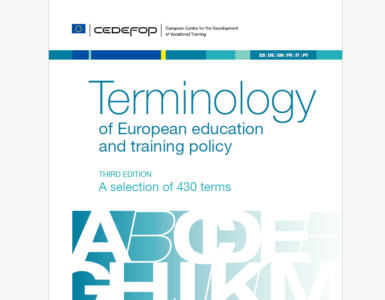The pandemic has been, and is still, a test of societies worldwide and their capacities and abilities to react and adapt according to new requirements. The same applies for higher education (HE). Along with my fellow researcher from the Heidelberg University of Education in Germany, Dr. Joshua Weidlich, we asked ourselves at the start of the pandemic , what enables HE lecturers to cope with the ad-hoc move to full online-learning? We assumed for our research that the sustained provision of education in HE was, at least partly, due to the instructional resilience of HE lecturers.
To approach this topic, we conducted a literature review on resilience (in education) and concluded that resilience is perceived as a dynamic process, influenced as much by contextual factors, attitudes, and availability of resources as well as individual differences in personality. We deducted a set of variables from this review which can be used to predict the instructional resilience of HE lecturers. These variables included a number of personal variables; relevant prior experience, institutional factors and last but not least some control variables like age and gender. A questionnaire was administered to 102 HE lecturers from brick-and-mortar as well as distance learning institutions to identify predictors of instructional resilience.
The majority of participants was female and came from Germany, the UK, US or the Netherlands. Half of the sample included lecturers from either distance teaching universities of specialised research groups on technology-enhanced learning (TEL) for which the expectation was that those lecturers would be better off during the pandemic compared to other lecturers.
Most participants reported a significant decrease of teaching quality, but surprisingly, nearly 20% of participants did not report any changes in teaching quality. Half of the sample reported no changes in teaching load through the shift to full online learning, HE lecturers report a significant subjective increase of ability to use technology for teaching. Interestingly, the perceived degree of institutional support did not contribute significantly to instructional resilience, but these results need to be treated with care, since most participants reported a high degree of support. In general, more conscientious and older staff showed higher degrees of instructional resilience. Surprisingly, being in a distance. teaching or TEL institution did not influence the instructional resilience of lecturers.
While lecturers reported no issues with presentation-oriented formats online, they found scenarios related to group learning, discussion and practice or application of knowledge challenging, pointing towards future areas for professional development. In addition, the role of relevant experience (specifically with regard to teaching with technology), personality, and motivation compared to the minor role of institutional factors suggests that institutional investments in training and skill development may pay off more than comparable investments into institutional support structures.
But the exploratory nature of the research calls for an expansion of the sample and a deeper look into the potential dependencies between institutional factors and other variables.
Our research article that tries to answer this question of resilience amongst HE teaching staff has just been accepted and scheduled for publication in August in the International Journal of Educational Technology in Higher Education (ETHE). A preprint of this research including the data is available here.

Author
Prof. Dr. Marco Kalz,
Heidelberg University of Education, Germany
Further information about the work carried out by Marco and his team here.














